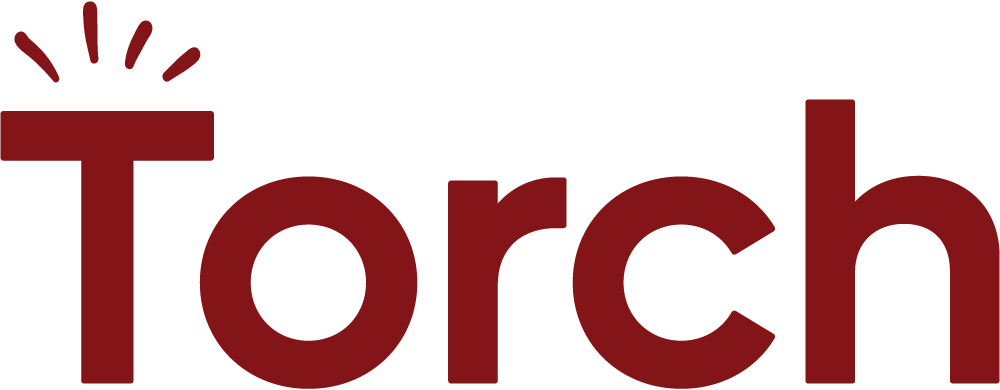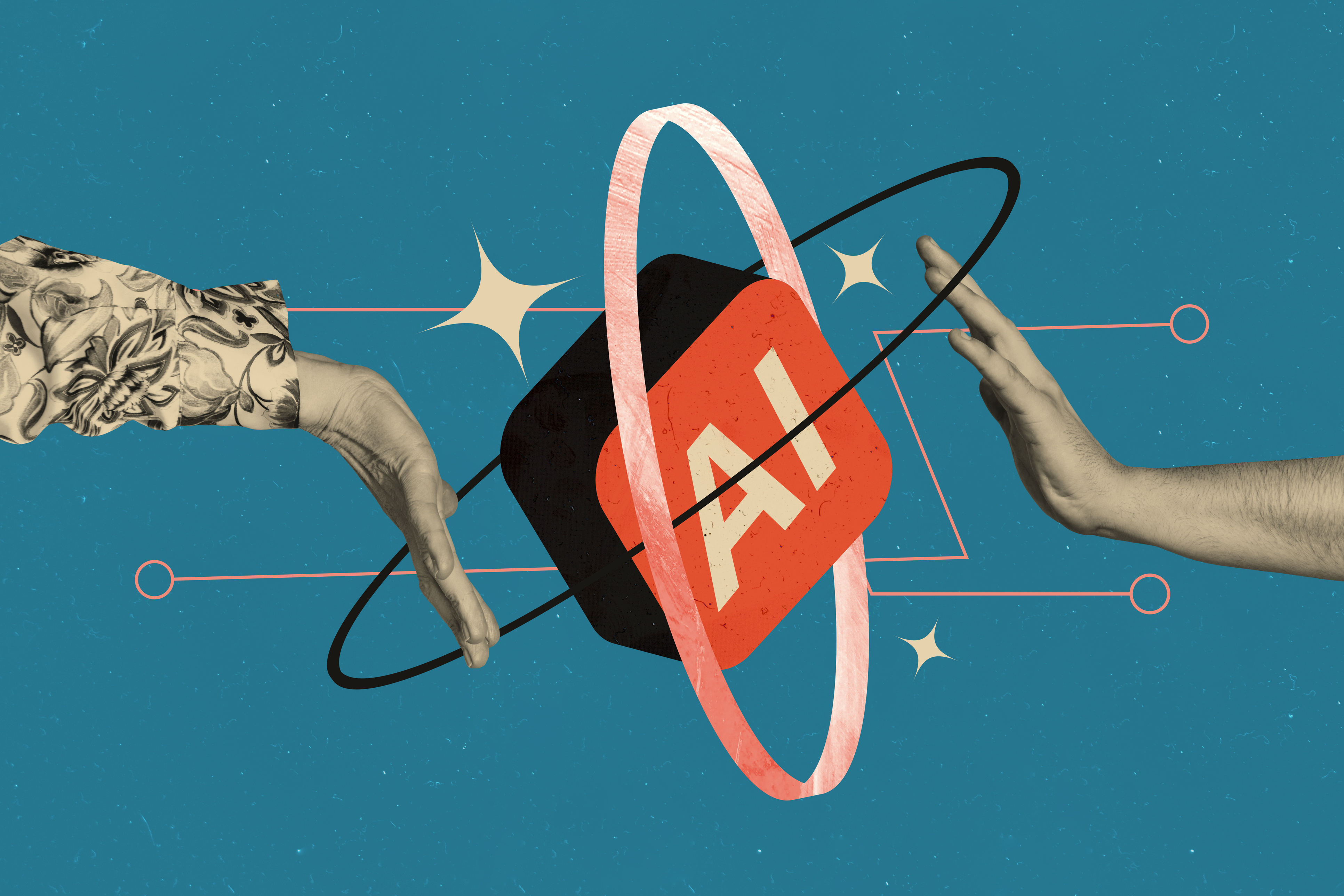MIT recently reported that 95% of AI pilots are failing despite $30-40 billion in GenAI spending. Was I surprised to see this? Not at all.
Harvard Business Review dug into that successful 5% and found something interesting. These companies aren’t winning because they have better technology.
They’re winning because they have leaders who can actually shape AI transformation by aligning innovation with business strategy, building trust, and driving adoption. The difference is leadership.
These companies aren’t winning because they have better technology. They’re winning because of leadership.
Why leaders are struggling
LinkedIn released research showing an 82% increase in people posting about feeling overwhelmed and navigating change this year. Meanwhile, 35% of people are afraid to talk about AI for fear of sounding uninformed. A third say they’re embarrassed by how little they understand it.
We’ve been through digital transformation, cloud migration, mobile-first shifts. You’d think we know how to do change by now. But AI is fundamentally different.
When email arrived, you didn’t have to change how you think. When smartphones came along, they didn’t challenge your sense of professional value. AI is the first technology that partners with human cognition. This forces us to rethink everything.
The missing piece of AI transformation
I’m seeing three patterns in my conversations with leaders right now. Each one tells you where the organization is psychologically with change.
- Mandates: “Use AI or lose your job.” Google made headlines with this recently. It creates compliance but not capability. People start using tools because they’re scared, not because they’re thinking strategically.
- Widespread experimentation: Pilots everywhere, hackathons, innovation time. This is a logical place to start, and experimentation itself is valuable for learning what’s possible. But on its own, this won’t lead to the value creation and impact that companies are seeking. You can’t measure business value or connect it to outcomes when it’s all energy without strategic direction.
- Strategic reimagination: These companies ask different questions: “What if AI means we need to fundamentally rethink how work gets done?” This is where actual transformation happens. But it’s still rare.
Most companies are stuck in that middle phase. It feels productive because there’s activity, but it’s missing the individual development that turns knowledge into sustained behavior change. How much are you going to let slip away while people figure it out themselves?
LinkedIn did something different
LinkedIn came to us last summer with a challenge. They needed their people to get ready for AI transformation. Instead of just rolling out AI tool training, they made coaching available to thousands of people to support that change.
They knew their teams needed to become more adaptable, and they understood this wasn’t a one-size-fits-all situation. The coaching needed to connect directly to LinkedIn’s specific AI transformation goals and help their leaders think and operate differently.
We didn’t just coach LinkedIn’s leaders individually. We gave them organizational intelligence about what was really blocking their AI transformation, and what was accelerating it.
What happened? Teams that were optimizing existing workflows started questioning whether campaigns should exist at all. Leaders who were making faster decisions started making fundamentally different ones.
LinkedIn gained insights into what else was standing in the way at the ground level and how that was either helping or hindering their AI transformation.
Where people get stuck
AI transformation affects every industry, company, function, level, and generation very differently. We see three distinct stages of individual readiness:
- Foundational: People use AI tools like they’re enhanced search engines. They ask questions, get answers, maybe automate some basic tasks. There’s curiosity about what’s possible, but also fear about what it means for their role.
- Practical: They start experimenting with real applications. Automating processes, analyzing data at scale, saving hours of work each week. Progress, but they’re still doing the same job faster rather than differently.
- Strategic: They step back and ask different questions. “Why do we do this process at all? What if we could redesign this from scratch?” This requires openness to abandoning what made them successful before.
Moving to strategic thinking means questioning everything they know about their work. It requires curiosity instead of resistance, openness instead of fear.
That’s exactly what we do at Torch. Our contextual coaching helps you practice these capacities in the moments that matter most—so trust isn’t something you talk about. It’s something you build, one conversation at a time.
Technical training is critical, but it’s only half the equation
Companies are investing heavily in technical AI training, and they should be. People need to know how to write effective prompts, which tools to use for what tasks, how to integrate AI into existing workflows. These skills are absolutely critical.
But technical skills alone aren’t enough. The barriers to AI adoption aren’t purely technical, generally people are picking up the tools quickly. The barriers are human.
People are scared they’ll work themselves out of a job. Leadership keeps changing direction on AI strategy. Everyone’s already drowning in competing priorities, so AI feels like just one more thing on an impossible list.
You can teach someone the perfect framework for giving feedback, but if they can’t manage their emotions under significant pressure or adapt their approach when faced with new information, that framework falls flat.
Technical skills help you handle specific situations. Leadership capacities determine how effectively you can apply any skill when everything is changing.
Same with AI. You can train people on prompt engineering, but without the ability to make decisions with incomplete information or break complex problems into actionable steps, they’ll just use AI to do their old job faster.
What works for AI readiness
Our coaches are former leaders who’ve navigated major technology shifts themselves. They understand what it feels like to lead through uncertainty when the rules are changing every day. More importantly, they help leaders develop the capacities that make strategic AI transformation possible.
We don’t just coach individuals in isolation. We’ve integrated AI-powered simulations into the coaching process, so leaders can practice making decisions in environments where AI is changing the game. They experience firsthand what it feels like to navigate situations where AI capabilities are constantly evolving.
Every coaching conversation connects to your organization’s real AI challenges. This gives you visibility into what’s actually blocking adoption and what’s working.
Every coaching conversation connects to your organization’s real AI challenges. We create a continuous feedback loop between individual development and organizational strategy, powered by AI insights that help us understand patterns across all coaching conversations. Real-time intelligence about what’s blocking adoption, where people are getting stuck, and what’s actually working.
When we help one leader embrace uncertainty and make decisions with incomplete information, that ripples through their team. The organizations that bridge the AI readiness gap combine technical competence with something deeper. The ability to navigate complexity, help others through change, and think strategically about what work should look like when AI can do the routine stuff.
What successful AI transformation looks like
The question isn’t whether your organization will experiment with AI, many already are. The question is whether you’ll be in the 5% that creates value or the 95% that doesn’t.
The leaders who get this right aren’t just working faster. They’re working completely differently. Workflows that don’t make sense anymore disappear. Teams stop spending hours on reports and start focusing on what the data actually means. People can focus on the work that actually matters because AI handles the repetitive tasks.
Want to be in that successful 5% that turns AI into actual value? Ready to close the AI readiness gap in your organization? Let’s talk.
Author spotlight
Webinar: The AI Readiness Gap – Why Technical Training Isn’t Enough
Torch CEO Heather Conklin and Head of AI Growth Elise Smith reveal how to build leaders who can maintain trust, model continuous learning, and guide teams through the uncertainty of AI transformation.


